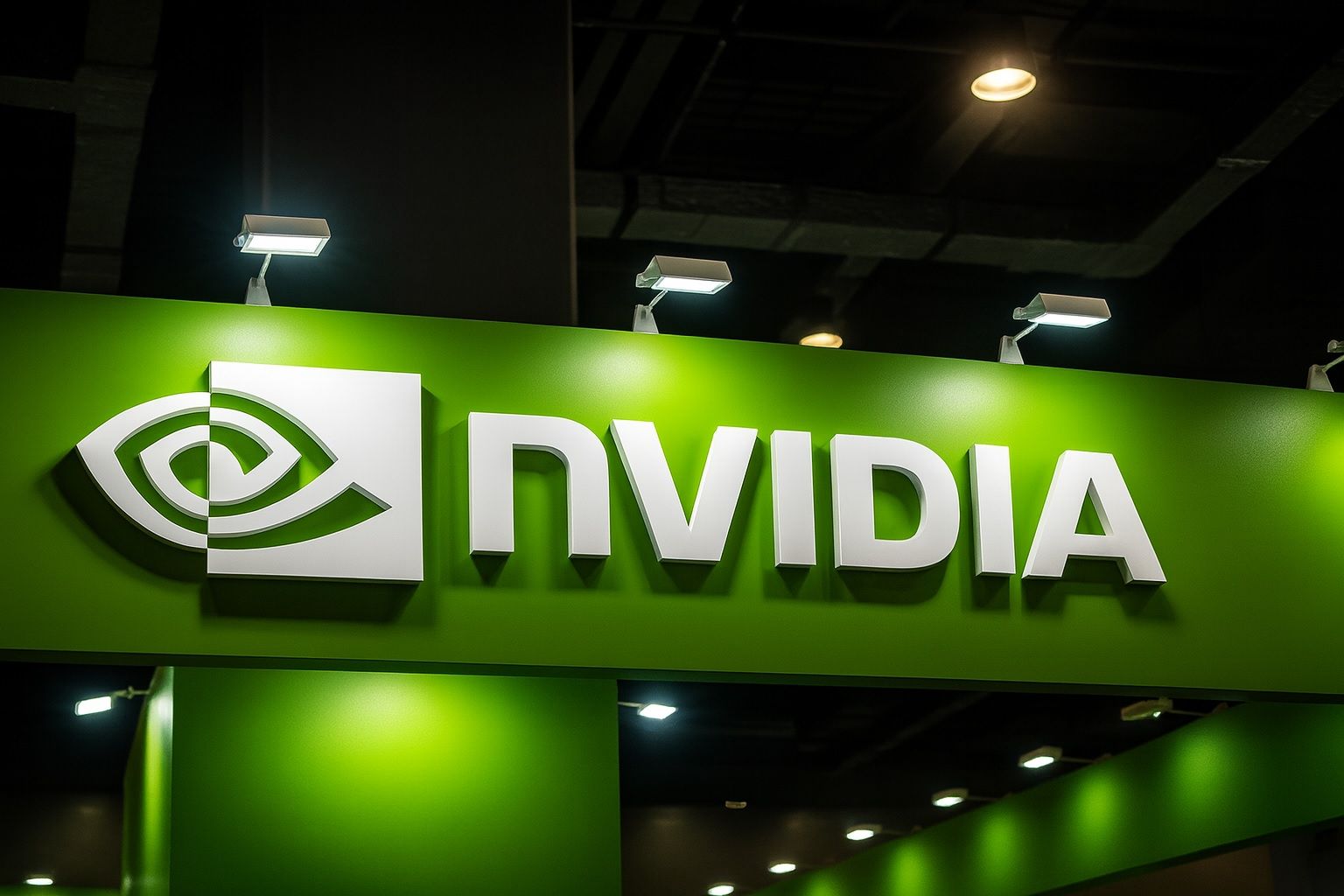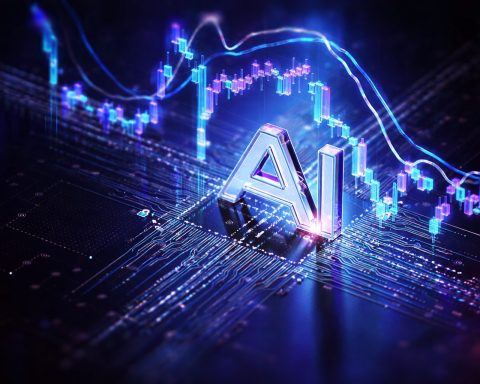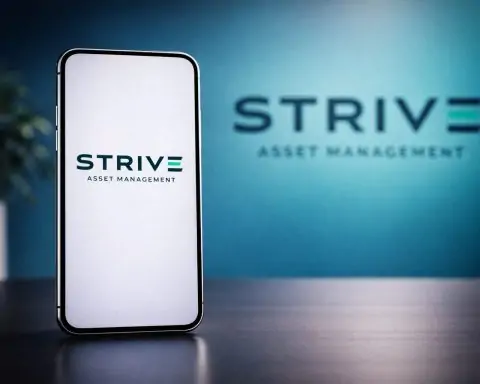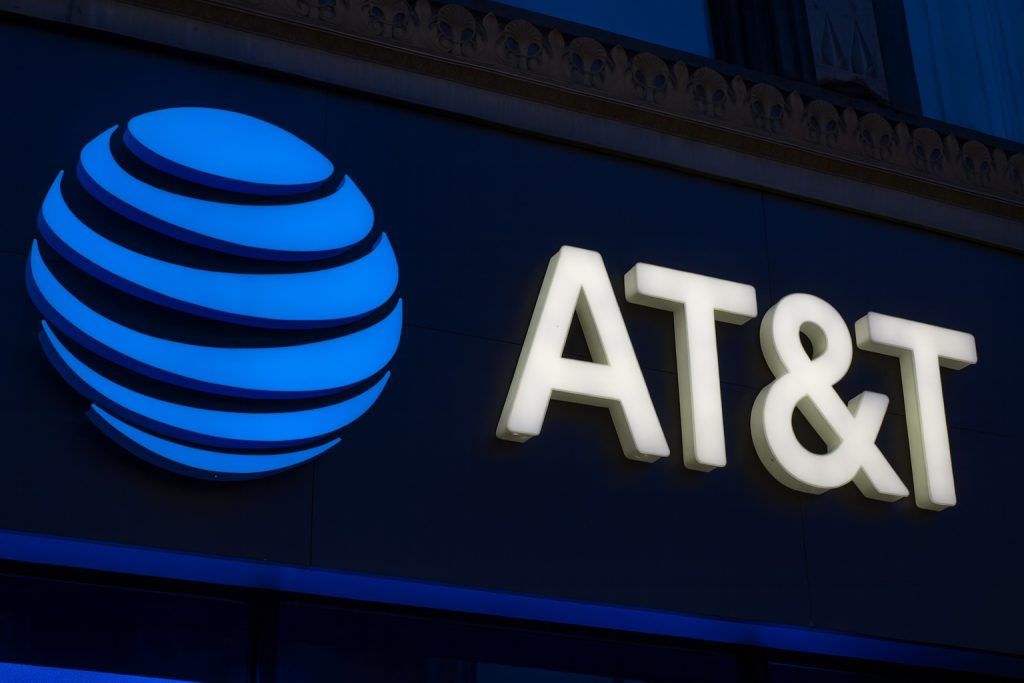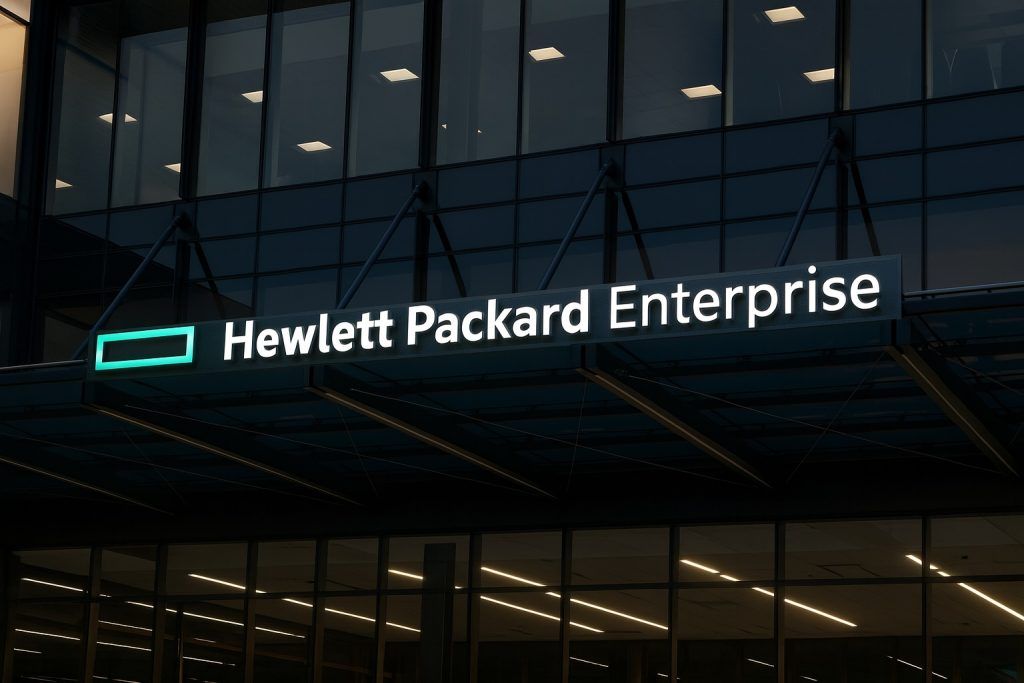- Shares Hover Near Peak: Nvidia’s stock (NASDAQ: NVDA) trades around $181–182 as of October 22, 2025, just shy of its all-time high (~$195) reached earlier this month [1] [2]. A mid-October pullback on profit-taking and rising bond yields briefly knocked NVDA down ~4%, but the stock quickly rebounded, underscoring its resilience [3] [4].
- AI Boom Turbocharges Growth: Insatiable demand for Nvidia’s AI chips drove a 56% revenue surge last quarter to $46.7 billion [5], with data-center GPU sales (for training generative AI models) contributing $41 billion (≈88% of revenue) [6]. Nvidia’s market capitalization swelled above $4.4 trillion, briefly making it the world’s most valuable company amid the AI frenzy [7].
- Big Deals & Investments: Nvidia is doubling down on the AI boom through massive partnerships. It agreed to invest up to $100 billion in OpenAI in exchange for deploying 10 GW of Nvidia GPU systems for the ChatGPT creator [8]. Last month, Nvidia also took a $5 billion stake in Intel – about 4% of the company – as part of a partnership to co-develop advanced chips, a lifeline that sent Intel shares soaring [9] [10]. And in a bid to secure computing capacity, Nvidia joined a consortium buying Aligned Data Centers for $40 billion [11].
- Product Milestones: The company’s innovation pace remains blistering. Nvidia unveiled its new GeForce RTX 50-series graphics cards (with AI-enhanced gaming features) and began shipping DGX Spark, touted as the world’s smallest AI supercomputer for researchers [12]. It also produced its first U.S.-made “Blackwell” AI chip wafers in TSMC’s Arizona fab – a milestone for onshore production [13]. Looking ahead, Nvidia plans to build giant next-gen “AI factories” (cutting-edge data centers) to meet exploding demand [14].
- Rivals & Risks: Competitors are eyeing Nvidia’s crown. AMD scored a blockbuster deal to supply its upcoming MI450 AI chips to OpenAI (up to 6 GW worth) and won a big order from Oracle’s cloud, signaling rising competition [15]. Nvidia’s dominance won’t vanish overnight (its H100 GPU is still the gold standard), but the AI chip race is tightening. Geopolitical risks also loom large: U.S. export controls bar Nvidia’s most advanced chips from China, threatening ~10–15% of its revenue [16]. Nvidia has developed toned-down “China edition” chips (e.g. A800) to comply [17], but further U.S.–China tech tensions or new curbs could restrict a key market.
- Wall Street Stays Bullish: Despite sky-high valuations, analysts remain overwhelmingly upbeat on NVDA. Over 90% of covering analysts rate it a “Buy,” with the average 12-month price target in the low-$200s (~15–20% above current levels) [18] [19]. Some are far more bullish: HSBC just upgraded Nvidia to Buy and set a Street-high $320 target – ~75–80% above today’s price [20] [21]. As one analyst put it, “AI is the real deal,” and Nvidia is the premier way to invest in that trend [22]. Another called Nvidia the “leader of the generative-AI golden wave,” poised at the “front-end of another material leg” of demand growth [23].
NVDA Stock on a Rollercoaster, But Near Highs
Nvidia’s stock has been on a rollercoaster in October, yet it remains within sight of record levels. In early October, NVDA surged to an intraday all-time high around $195.62 amid frenzied buying driven by AI hype [24]. The rally stalled mid-month when rising interest rates and strong bank earnings triggered a rotation out of pricey tech shares. On October 14, Nvidia tumbled over 4% in one session, dipping to roughly $180 at its lows [25]. Traders seized the moment to take profits, especially given Nvidia’s rich valuation (around 50× earnings, far above market norms) [26].
However, dip buyers quickly stepped in. By the end of that week, NVDA had bounced back into the low $180s [27]. As of Oct. 22, the stock is up about 58% year-over-year [28], massively outperforming the broader market. Major indexes have wobbled recently on macro concerns, but investors continue to gravitate toward “AI winner” stocks like Nvidia. The stock’s ability to hold near its peak keeps it squarely in the spotlight. “Nvidia enters the week as a market darling,” noted one market observer, riding powerful tailwinds despite bouts of volatility [29].
AI Frenzy Fuels Record Sales and a $4 Trillion Valuation
Nvidia’s fundamentals are validating the AI hype. In its latest earnings (fiscal Q2 2026, covering May–July 2025), Nvidia blew past expectations with revenue of $46.7 billion, up 56% year-on-year [30]. Astonishingly, about 88% of those sales ($41 billion) came from Nvidia’s data-center platforms – chiefly the GPUs that power generative AI and large-language models [31]. This growth is unprecedented for a company of Nvidia’s size. Profitability has surged as well, with gross margins above 72% and net income exceeding 50% of revenue [32]. Simply put, the AI feeding frenzy is translating into record financial results for Nvidia.
Investors have accordingly bid Nvidia’s market capitalization into the stratosphere. In early October, Nvidia’s market cap briefly exceeded $4.5 trillion, vaulting it past every other company on the planet [33]. Even after a slight pullback, it sits around $4.4 trillion today – more than 10× the size of AMD and 30× Intel combined [34]. This kind of valuation (roughly 50–53× current earnings, ~33× forward projections) far outpaces the semiconductor industry average [35]. Bulls argue that Nvidia’s earnings haven’t yet caught up to its explosive demand – the company is forecast to grow revenue ~34% next year, which for many justifies a premium multiple [36]. Skeptics counter that at these heights Nvidia is priced for perfection, leaving zero margin for error. Any slowdown in AI spending or an earnings miss could trigger a painful correction, they warn [37]. A recent Reuters Breakingviews commentary noted that at $4+ trillion, Nvidia is “not obviously expensive” given its growth – but if the market turns frothy, the stock could overshoot and then pull back sharply [38].
For now, Nvidia continues to fire on all cylinders. The company is rapidly launching new products and services to entrench its dominance in AI hardware. In just the past few weeks, Nvidia rolled out the GeForce RTX 50-series GPUs – its latest graphics cards for gamers, boosted by on-chip AI features – and began shipping a new mini supercomputer called DGX Spark that lets researchers train AI models on a desktop-sized system [39]. CEO Jensen Huang has called Nvidia’s new Blackwell AI chip architecture “the AI platform the world has been waiting for,” noting that production is ramping at full speed to meet “extraordinary” demand [40]. Nvidia is also planning ahead for ever larger AI workloads: at a recent industry event it unveiled designs for next-generation “AI factories” – essentially giant data centers with advanced power and cooling, dedicated entirely to AI model training [41]. In fact, one of Nvidia’s smaller suppliers, Navitas Semiconductor, saw its stock soar 18% in a day after Nvidia chose its power chips for these AI facilities [42] [43]. The message is clear – far from resting on its laurels, Nvidia is aggressively reinvesting in capacity and innovation to maintain its edge.
Those real-world results and initiatives underpin Nvidia’s astronomical valuation – even if some AI optimism is arguably already “baked in.” As long as the company keeps executing, many analysts say the stock’s steep price is justified. Each quarter of blockbuster growth extends Nvidia’s narrative as the backbone of the AI revolution.
Major Moves: Partnerships, Investments, and Expansion
Nvidia hasn’t been content to simply sell chips – it’s striking ambitious deals and investments to cement its leadership in the AI era. Perhaps the most headline-grabbing is Nvidia’s new partnership with OpenAI. In late September, OpenAI and Nvidia announced a landmark plan to build at least 10 gigawatts of cutting-edge AI supercomputers using Nvidia hardware. To support this, Nvidia will invest up to $100 billion in OpenAI as the infrastructure is built out [44] [45]. The arrangement essentially guarantees OpenAI access to massive computing power (millions of Nvidia GPUs) for years – and guarantees Nvidia a primary role in one of the world’s biggest AI projects. It’s a symbiotic alliance that would have been almost unthinkable before the AI boom. OpenAI, along with other tech giants, is racing to lock in enough chips to train ever-larger models. According to Reuters, major AI players have inked deals for some 26 GW of AI compute capacity in recent weeks – commitments that could exceed $1 trillion in total value [46]. Nvidia’s tie-up with OpenAI is perhaps the clearest sign yet of how critical its hardware has become to AI leaders (and how far the company is willing to go to keep that status).
Meanwhile, Nvidia stunned the industry by coming to the aid of a longtime rival. On Sept. 18, the company revealed it will invest $5 billion in Intel Corporation, making Nvidia one of Intel’s largest shareholders with roughly a 4% stake [47]. This extraordinary move – coming just weeks after the U.S. government itself took a stake in Intel to shore it up [48] – is part of a strategic partnership between the two chipmakers. Nvidia and Intel plan to jointly develop new PC and data center chips, combining Nvidia’s GPUs and networking know-how with Intel’s CPU and manufacturing expertise [49]. Notably, Intel will not be making Nvidia’s chips outright (Nvidia still relies on TSMC for its most advanced GPU fabrication), but Intel will supply certain central processors and packaging for joint products [50]. CEO Jensen Huang said the White House was not involved in orchestrating the Nvidia-Intel pact, but it aligns with U.S. goals to bolster domestic chip capabilities [51]. The deal immediately boosted confidence in Intel – its stock jumped 23% on the news [52] – and analysts called it a “game-changer” that could reset Intel’s future in AI hardware [53] [54]. For Nvidia, backing Intel might ensure a more robust supply chain (Intel could become a backup fab or partner in the U.S.) and is a bold bet that Intel can rebound as an ally rather than a competitor. One investment CEO even speculated this could be “the first step of an eventual acquisition or breakup” of Intel among U.S. chipmakers [55] – though she added Intel may simply survive as a shadow of its former self, with Nvidia now deeply involved in its fate.
At the same time, Nvidia is helping bankroll the infrastructure that powers AI. It joined forces with BlackRock, Microsoft, and others in a consortium to acquire Aligned Data Centers – one of the world’s largest data center operators – in a $40 billion deal [56]. Aligned runs about 80 data centers (with 5 GW of capacity) across the U.S. and beyond [57]. The purchase, spearheaded by BlackRock’s AI Infrastructure Partnership, is all about securing coveted computing capacity for AI. “With this investment in Aligned, we further our goal of delivering the infrastructure to power the future of AI,” BlackRock CEO Larry Fink said in a statement [58]. For Nvidia, having a stake in huge data centers ensures ample space and power for deploying its chips at scale. “They’re looking at rapid expansion to meet AI demand,” observed Joe Tigay, a portfolio manager at an Nvidia shareholder firm, referring to the consortium’s aggressive move [59] [60]. It’s the latest example of how Nvidia and its partners are spending tens of billions to build out the backbone of AI, from chips to entire server farms. (Morgan Stanley estimates global AI infrastructure spending will hit $400 billion this year [61].) Nvidia is also partnering on cutting-edge projects abroad – for instance, it’s teaming with Australia’s Firmus Technologies on a A$4.5 billion (USD $2.9 billion) initiative to build renewable-powered AI supercomputing centers Down Under [62] [63].
In short, Nvidia is using its enormous cash flow (and stock currency) to embed itself at every layer of the AI value chain. From investing in chips (Intel) to securing customers (OpenAI) to owning data centers (Aligned) to developing new hardware (GPUs, networking, supercomputers), the company is cementing an ecosystem that will be hard to match. This expansive strategy could yield an even stronger competitive moat – but it doesn’t come without challenges, and rivals are mobilizing.
Rising Competition and Trade Tensions
After years of Nvidia’s near-monopoly in high-end AI chips, competitors are finally making inroads. Chief among them is Advanced Micro Devices (AMD), which has long trailed Nvidia in GPUs but is leveraging the AI boom to close the gap. Earlier this month, AMD scored a headline-grabbing victory by striking a deal to supply up to 6 GW of AI accelerators to OpenAI [64]. OpenAI will reportedly use AMD’s forthcoming MI450 chips in its infrastructure – a huge order that even gives OpenAI an option to take a small equity stake in AMD [65]. In a related win, Oracle announced it will deploy 50,000 AMD MI450 GPUs in its cloud data centers next year [66] – a strong vote of confidence in AMD’s technology. These moves “won’t dent Nvidia’s dominance overnight” (Nvidia’s H100 is still considered the top-performing AI chip) [67]. However, they signal that competition is heating up, and that even flagship Nvidia customers are shopping around. AMD’s stock has soared on its AI push, and other players like Broadcom are also partnering with big AI firms to develop custom chips.
Nvidia isn’t standing still on the competitive front – it has even started selling full AI systems (dubbed “AI superclusters”) with its own Grace CPUs and H100 GPUs bundled together [68]. By offering a one-stop, turnkey AI server (instead of just chips), Nvidia aims to lock in customers who might otherwise mix-and-match components from rivals. It’s a strategy to fend off AMD, which is racing to launch its own combined CPU–GPU platforms for AI. The late 2020s could see a much more crowded AI chip market [69], industry observers say, which might eventually pressure Nvidia’s pricing power or market share. For now, Nvidia’s lead (over 90% share in data-center GPUs by some estimates) is intact, but the battle is intensifying.
A major overhang for Nvidia – and all U.S. chipmakers – is geopolitics. Roughly a tenth of Nvidia’s revenue comes from China [70], historically one of its largest markets for data center and enterprise GPUs. But that business is under threat from a deepening tech standoff between Washington and Beijing. Over the past year, the U.S. government has imposed sweeping export controls that bar Nvidia from selling its most advanced chips to China, citing national security and a desire to limit China’s AI capabilities [71] [72]. These rules hit Nvidia’s flagship A100 and H100 GPUs, essentially cutting off Chinese hyperscalers and firms from top-tier American AI chips. Nvidia responded by creating slightly downgraded versions (like the A800 and H800 GPUs) that meet the letter of the law so they can still be sold in China [73]. But those workarounds only partially mitigate the impact – and the uncertainty is weighing on future sales. Beijing, for its part, has retaliated with its own tech crackdowns, including restricting exports of critical chipmaking metals and launching security reviews of U.S. chip companies operating in China [74]. The tit-for-tat measures have made Nvidia a pawn in a larger geopolitical chess match, caught between its two biggest markets.
Just in the past week, fresh headlines suggest Washington may tighten the screws even more: new stricter curbs on AI chip exports to China are reportedly under consideration, sparking volatility in semiconductor stocks [75]. Each new rumor or rule can send NVDA stock gyrating. Jensen Huang has openly lamented that U.S. policy took Nvidia’s China market share “from 95% to 0%” in certain segments [76]. And Chinese tech champions are scrambling to develop indigenous AI chips (Huawei recently unveiled an advanced AI processor) to reduce reliance on Nvidia.
On the positive side, there are glimmers of a thaw in trade tensions. U.S. President Donald Trump and China’s President Xi Jinping are slated to meet in mid-November at the APEC summit in South Korea [77]. Hopes are rising that this high-level dialogue could yield an agreement easing the tech trade war [78]. Reportedly, one proposal would allow certain Nvidia AI chips (a specially designed H20 model) to be sold in China again [79] – a small concession that nonetheless lifted market sentiment. Nvidia’s CEO Jensen Huang will be on the ground at APEC as well, meeting with key Asian partners like Samsung and SK Hynix [80]. Any hint of détente – for example, if export restrictions are relaxed or licenses granted – could remove a major headwind and unlock pent-up demand from Chinese buyers [81]. Conversely, if talks falter and new sanctions emerge, Nvidia will have to navigate an even more complex East–West divide. It’s truly a high-stakes balancing act: the company enabling everyone’s AI ambitions is itself caught between geopolitical giants.
Not all government actions have been hurdles, however. The U.S. is selectively opening other markets for Nvidia’s chips. This month, the Biden administration quietly approved billions of dollars worth of Nvidia’s AI chip exports to the United Arab Emirates [82]. The licenses were granted under a new bilateral AI cooperation agreement, after the UAE agreed to invest in U.S. tech in return [83]. The deal allows the Gulf nation to import up to 500,000 of Nvidia’s top-end GPUs per year starting in 2025 [84] – a massive volume aimed at building UAE’s own AI supercomputers. Such moves show that while China faces restrictions, other regions with U.S. ties are being encouraged to buy Nvidia’s technology. Additionally, Trump’s administration has inked huge chip purchase commitments with allies like Saudi Arabia (which plans to buy large quantities of Nvidia, AMD, and Qualcomm chips as part of a $600 billion investment package) [85]. These overseas deals underscore how Nvidia’s fortunes are increasingly linked not just to Silicon Valley, but to global diplomatic currents. In the near term, the outcome of U.S.–China negotiations and the fine print of export policies may have as much impact on NVDA stock as the next product it launches.
Street View: “AI Champion” Status and Soaring Price Targets
Despite the risks, Wall Street’s enthusiasm for Nvidia remains sky-high. The company is widely seen as the unrivaled leader of the AI hardware wave, and many analysts argue it has years of growth still ahead. According to Refinitiv, over 80% of analysts rate NVDA a Buy and 0% say Sell [86]. TipRanks similarly shows a “Strong Buy” consensus with 35 Buys, 1 Hold, and 1 Sell among 37 analysts [87]. “AI is the real deal,” one analyst remarked – and Nvidia is considered the premier play on that megatrend [88]. The average 12-month price target now sits around $215–225 per share [89], ~15–25% above the latest price. That consensus has steadily climbed higher in recent months as Nvidia delivered one earnings blowout after another.
Notably, even some former skeptics have turned outright bullish. In mid-October, HSBC’s semiconductor team (which had been cautious) dramatically upgraded Nvidia to “Buy” from Hold. Analyst Frank Lee not only lifted his rating but issued a new Street-high target of $320 – up from his prior $200 target [90] [91]. That implies roughly 75–80% upside from current levels. Lee’s change of heart was driven by Nvidia’s accelerating prospects: he sees the AI GPU market expanding even faster than expected, with demand spreading beyond the Amazons and Googles of the world to a broader swath of businesses [92] [93]. His team significantly raised their estimates for Nvidia’s future sales. In fact, HSBC now projects Nvidia’s data-center revenue will reach $351 billion in FY2027 – a stunning 36% above the prior Wall Street consensus [94] [95]. Lee also noted a potential tailwind that many had written off: a recovery in China. “We see potential easing of China GPU uncertainties following a possible US–China trade deal that could enable Nvidia to see a demand recovery in the Chinese market,” the HSBC note stated [96]. In short, the firm believes Nvidia’s total addressable market is growing so rapidly (and could get an extra boost if export curbs relax) that the company can keep posting extraordinary growth for years. HSBC was one of the last major holdouts on Nvidia – its capitulation sent a strong signal. The stock inched higher on the upgrade, and other analysts have echoed the optimism. For example, UBS’s Timothy Arcuri also now pegs Nvidia at $320 within a year [97], and analysts at Jefferies and Loop Capital recently hiked their targets into the $220–250 range [98].
Analysts aren’t just cheering from the sidelines; they’re adjusting models to catch up with Nvidia’s performance. Many on Wall Street underestimated how quickly AI adoption would explode – and how handsomely Nvidia would profit. The company has now trounced earnings forecasts for several quarters running, forcing analysts to revise their outlooks upward each time. It doesn’t hurt that Nvidia itself has provided bullish guidance. The company forecast around $16 billion in revenue for the current quarter (Aug–Oct), which if achieved would be roughly 170% growth year-on-year [99]. Little wonder that expectations are sky-high for Nvidia’s next earnings report, due on November 19. Another blowout quarter is widely anticipated [100]. “Anything less might be a surprise at this point,” joked one market columnist [101]. Wall Street will be laser-focused on Nvidia’s commentary about any supply constraints or order backlogs, as demand has at times outstripped Nvidia’s production capacity this year. They’ll also parse any hints about new competition (such as AMD’s upcoming chips) potentially nibbling at Nvidia’s growth. But so far, Nvidia’s management has exuded confidence – and analysts largely share it.
To be sure, a few voices of caution remain. Valuation is the obvious sticking point: at ~50 times earnings, Nvidia’s stock assumes years of blistering growth ahead [102]. Bears argue that the stock could falter if the AI spending cycle slows or if companies start optimizing software to require fewer GPUs. Some also warn of a possible “AI bubble” forming in equity markets – sentiment can swing violently if hype exceeds reality. These skeptics suggest trimming exposure to Nvidia after its huge run, or at least hedging against volatility. But for now, the optimists clearly have the upper hand [103] [104]. As Loop Capital’s Ananda Baruah wrote, Nvidia is at the “front-end of another material leg” of growth thanks to generative AI, and remains the “leader of the…AI golden wave.” [105] In other words, many believe Nvidia is not a fad but a foundational player in a technological shift – and thus deserves a premium.
Outlook: Key Drivers to Watch
Going forward, Nvidia’s trajectory will be shaped by a mix of its own execution and broader forces. On the company front, all eyes are on the Q3 earnings release (Nov 19) to confirm that the AI boom is still accelerating Nvidia’s financials. Another revenue beat and strong guidance could propel the stock to new highs; conversely, any hint of plateauing demand would test the market’s faith. Keep an eye on Nvidia’s supply chain updates – the company has been working closely with TSMC and others to ramp output, but any bottlenecks (in chips, memory, or otherwise) could limit near-term growth. Nvidia’s commentary on its order backlog and the split between hyperscaler customers vs. newer entrants (like smaller cloud providers or nations building AI infrastructure) will also be telling.
Beyond earnings, the geopolitical narrative will continue to loom large. The mid-November meeting between U.S. and Chinese leaders is a potential inflection point. If negotiations yield even a partial easing of tech export rules – say, permitting certain Nvidia GPUs to be sold in China under license – it would likely spark a relief rally in Nvidia and semiconductor stocks. Conversely, if talks break down or if the U.S. announces harsher chip restrictions, it could spur another sell-off on NVDA and its peers (as happened when new curbs were rumored in October) [106]. Investors should brace for headline-driven swings. Trade policy isn’t the only wild card: macroeconomic conditions (interest rates, recession risks) can sway sentiment toward high-valuation tech names like Nvidia. October showed that even Nvidia is not immune to broader market rotations when Treasury yields spike [107]. However, the stock’s quick recovery also demonstrated that strong fundamental demand can trump macro jitters in the eyes of many investors.
Another trend to watch is the wider tech ecosystem’s reaction to Nvidia’s dominance. As Nvidia’s success grows, so does the resolve of others to foster alternatives. In the coming year, we’ll see new AI chips from AMD, Intel, Google, Amazon, Huawei and more – some will target niches, others general workloads. While none may unseat Nvidia’s flagships immediately, collectively they could start to chip away at Nvidia’s share at the margins. If, for instance, AMD’s MI450 delivers compelling performance per dollar, cloud providers might split their orders between Nvidia and AMD to diversify sources. Similarly, if geopolitical blocs like China or the EU invest heavily in domestic AI accelerators, Nvidia could face segmented markets. To counter this, Nvidia is likely to keep innovating rapidly (e.g. its upcoming next-gen “Rubin” architecture for 2026) and locking in customers via software ecosystems like CUDA, which remains a key differentiator. It helps that Nvidia’s moat isn’t just hardware; its CUDA developer platform and AI libraries have deep adoption, making switching costs high [108] [109].
In the bigger picture, Nvidia’s role in the market extends beyond one stock’s performance – it has become a bellwether for the entire tech sector. The company’s roughly four-fold increase in value since 2023 illustrates how dramatically investor attitudes have shifted with the rise of AI [110]. Every twist in the AI story – a breakthrough model, a government policy, a big corporate investment – seems to reverberate through NVDA’s price. The stock’s journey this year (soaring, dipping, and resuming its climb) encapsulates both the incredible promise and the volatility of the AI theme [111]. Short-term traders can expect more bumps ahead, especially around major news events or economic data. But long-term stakeholders are focusing on the big picture: Nvidia’s pivotal role in an AI revolution that is reshaping technology and commerce. As one portfolio manager remarked regarding Nvidia’s recent data-center acquisitions, “They’re looking at rapid expansion to meet AI demand” [112] – a statement that sums up Nvidia’s current ethos.
Ultimately, whether NVDA stock breaks out to new highs or faces another pullback will depend on its ability to keep meeting the market’s lofty expectations. Thus far, the company has delivered in spectacular fashion, and its vision (from chips to systems to entire AI networks) positions it at the heart of tech’s most important growth engine. Few could have imagined just two years ago that Nvidia – then valued under $1 trillion – would become a multi-trillion dollar titan driving market cycles [113]. But that is today’s reality. No one doubts that Nvidia will remain a central character in the market’s story for the foreseeable future [114]. The only debate is how the next chapters will unfold. In the meantime, investors and analysts alike will be watching each development closely – from earnings to export rules to AI breakthroughs – for clues about where this powerhouse goes next.
Sources: TechStock² (TS2) [115] [116]; Reuters [117] [118]; Bloomberg [119]; Yahoo Finance via Nasdaq/Motley Fool [120]; Insider Monkey [121]; NVIDIA Newsroom [122]; and other financial media as cited.
References
1. ts2.tech, 2. www.nasdaq.com, 3. ts2.tech, 4. ts2.tech, 5. ts2.tech, 6. ts2.tech, 7. ts2.tech, 8. 247wallst.com, 9. www.reuters.com, 10. www.reuters.com, 11. www.reuters.com, 12. ts2.tech, 13. ts2.tech, 14. ts2.tech, 15. ts2.tech, 16. ts2.tech, 17. ts2.tech, 18. ts2.tech, 19. www.tipranks.com, 20. www.insidermonkey.com, 21. www.nasdaq.com, 22. ts2.tech, 23. ts2.tech, 24. ts2.tech, 25. ts2.tech, 26. ts2.tech, 27. ts2.tech, 28. ts2.tech, 29. ts2.tech, 30. ts2.tech, 31. ts2.tech, 32. ts2.tech, 33. ts2.tech, 34. ts2.tech, 35. ts2.tech, 36. ts2.tech, 37. ts2.tech, 38. ts2.tech, 39. ts2.tech, 40. ts2.tech, 41. ts2.tech, 42. ts2.tech, 43. ts2.tech, 44. nvidianews.nvidia.com, 45. nvidianews.nvidia.com, 46. www.reuters.com, 47. www.reuters.com, 48. www.reuters.com, 49. www.reuters.com, 50. www.reuters.com, 51. www.reuters.com, 52. www.reuters.com, 53. www.reuters.com, 54. www.reuters.com, 55. www.reuters.com, 56. www.reuters.com, 57. www.reuters.com, 58. www.reuters.com, 59. www.reuters.com, 60. ts2.tech, 61. www.reuters.com, 62. www.energyconnects.com, 63. finance.yahoo.com, 64. ts2.tech, 65. ts2.tech, 66. ts2.tech, 67. ts2.tech, 68. ts2.tech, 69. ts2.tech, 70. ts2.tech, 71. ts2.tech, 72. ts2.tech, 73. ts2.tech, 74. ts2.tech, 75. ts2.tech, 76. ts2.tech, 77. ts2.tech, 78. ts2.tech, 79. ts2.tech, 80. ts2.tech, 81. ts2.tech, 82. www.reuters.com, 83. www.reuters.com, 84. www.reuters.com, 85. www.reuters.com, 86. ts2.tech, 87. www.tipranks.com, 88. ts2.tech, 89. www.tipranks.com, 90. www.insidermonkey.com, 91. www.insidermonkey.com, 92. www.insidermonkey.com, 93. www.insidermonkey.com, 94. www.insidermonkey.com, 95. www.tipranks.com, 96. www.insidermonkey.com, 97. www.nasdaq.com, 98. ts2.tech, 99. ts2.tech, 100. ts2.tech, 101. ts2.tech, 102. ts2.tech, 103. ts2.tech, 104. ts2.tech, 105. ts2.tech, 106. ts2.tech, 107. ts2.tech, 108. www.nasdaq.com, 109. www.nasdaq.com, 110. ts2.tech, 111. ts2.tech, 112. www.reuters.com, 113. ts2.tech, 114. ts2.tech, 115. ts2.tech, 116. ts2.tech, 117. www.reuters.com, 118. www.reuters.com, 119. www.energyconnects.com, 120. www.nasdaq.com, 121. www.insidermonkey.com, 122. nvidianews.nvidia.com
